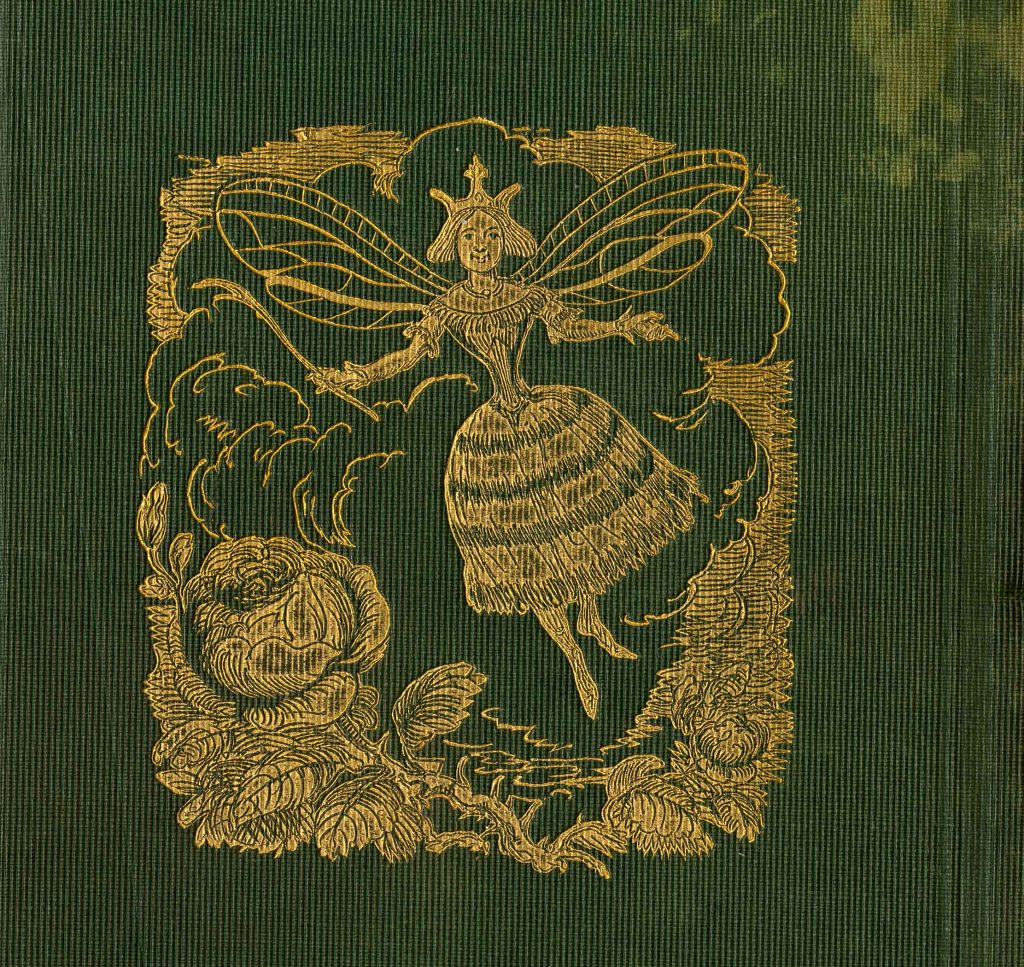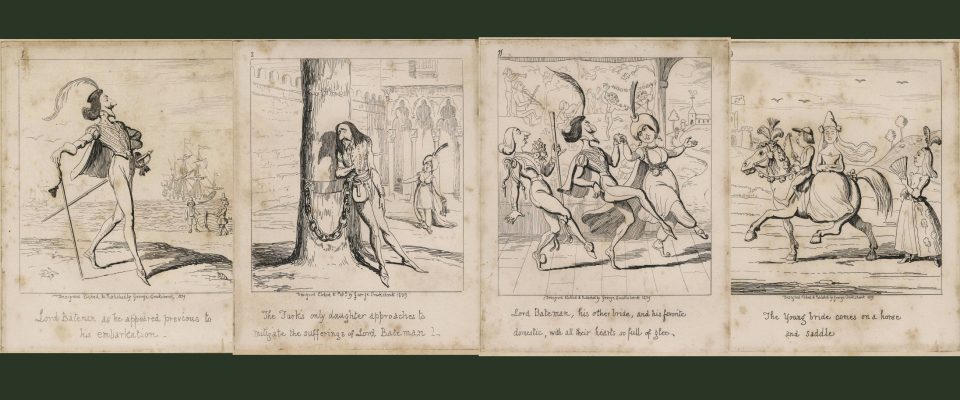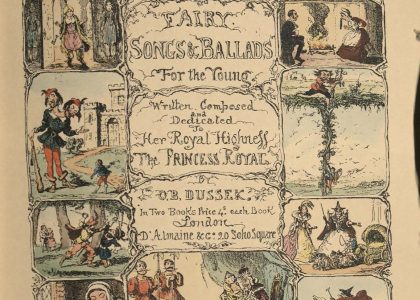
Cruikshank lived and worked during the stratospheric rise of book illustration and, by the time of his death, was considered a “rare and original genius, a pioneer” in its forms (Punch, 1878). With the advent of graphic technologies–woodcuts, steel and wood engravings, copperplate etchings, lithography, mezzotint–authors could commission artists to provide visual art to enhance and beautify their texts. These illustrations added visual interest and character dimension to the literary work, allowing readers to fully immerse inside the world of the story.
As scholar Lynn Alexander explains, book illustrations “can develop a novel’s themes subtly, delicately, and powerfully…illustrations often extended the story’s visual frameworks or characters, alerted the reader to significant patterns, or added metaphorical comment.”
Book illustrations provided an essential launch pad for the rest of Cruikshank’s artistic career. While Cruikshank’s illustrations for Charles Dickens’s Oliver Twist are by far his most recognized, he illustrated at least 860 books throughout his career. These contributions range from page decorations, called cuts, to intricately detailed, hand-colored plates. The thematic range of his work stretches from depictions of iconic characters to action scenes to fantastical sketches of otherworldly contraptions.
“For a long time Cruikshank’s etchings were the model of book illustrations, and it will be chiefly as a book illustrator that the artist will be remembered. To many of us the characters of the old novelists made their appeal only in the dress that Cruikshank gave them.”
“George Cruikshank,” London Examiner for July 10, 1875.
The items featured in these pages are a small but representative snapshot of Cruikshank’s extensive work in book illustration. The collection “Novel Collaborators” explores George Cruikshank’s work for–and at times contentious relationships with–notable novelists Charles Dickens (1812-1870) and William Harrison Ainsworth (1805-1882). The “Fantasy & Folklore” collection explores a broader range of sketches, capturing the theatrics of George Cruikshank’s illustrative work in fairy tales as well as whimsical sketches and depictions of the occult.
In these collections, you will be introduced to a dramatic, curious, and entertaining section of George Cruikshank’s career as his illustrations brought vibrant life to the printed page.
Click on the images below to explore each collection




 Albin O. Kuhn Library & Gallery
Albin O. Kuhn Library & Gallery